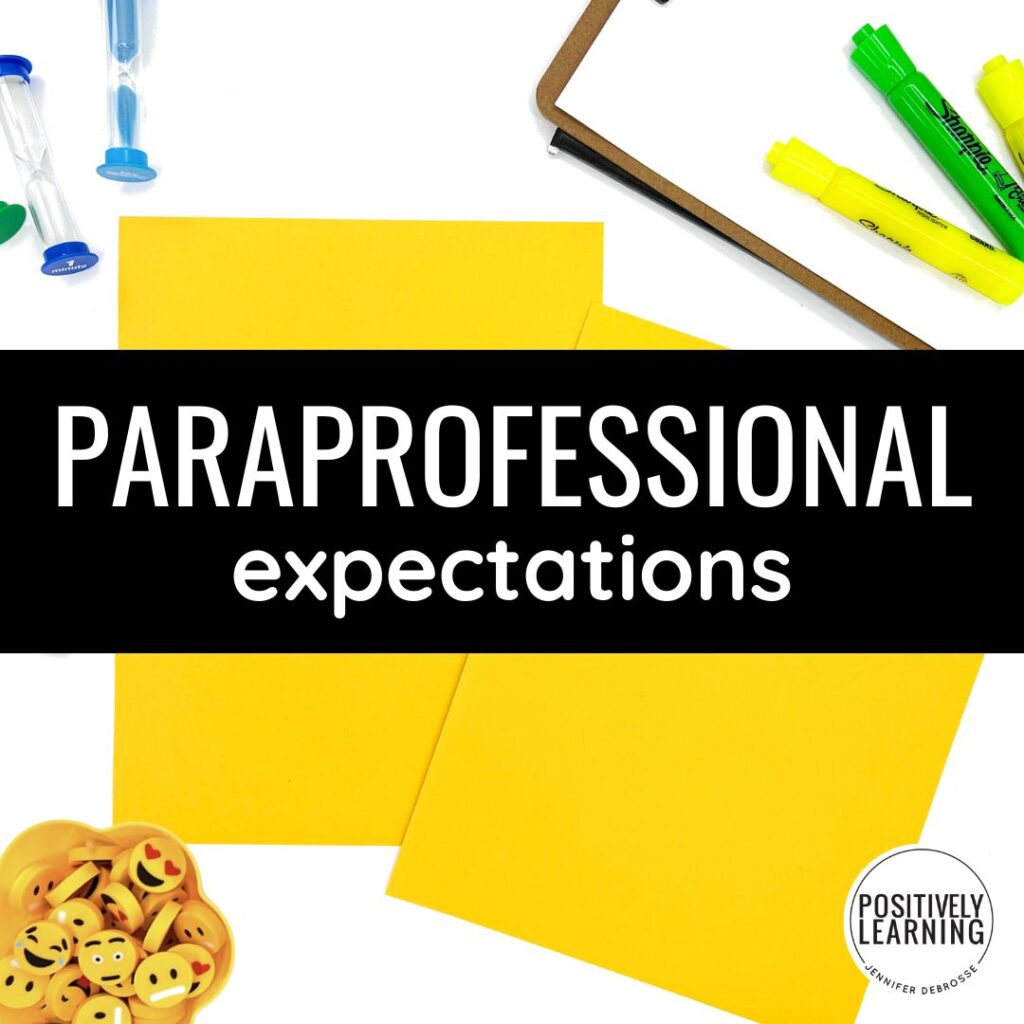
Special educators' days are packed, from juggling lesson plans and monitoring student progress, creating a classroom community, and advocating for every student. It's a balancing act that needs not only commitment, but also a rock-solid team backing us up. This is where special education paraprofessionals come into the spotlight.
Getting clear on expectations with paraprofessionals right from the start can seriously up our game, making everyone's lives feel a bit easier and our teaching more impactful.

Table of Contents
ToggleReady to find out how to make this happen without breaking a sweat? Let's explore how to kick things off, why it's a game-changer, and what you definitely want to include.
At the beginning of the school year, or whenever a new paraprofessional joins your team, start with an introduction to the special education process and your classroom's specific needs.
A great way to do this is through a Paraprofessional Training Binder or another type of written communication. This binder should serve as a helpful guide that offers an overview of the special education process, classroom management strategies, and the important role each staff member plays in fostering a supportive school environment.
Important Note: These expectations can be refreshed and reintroduced ANY time of the school year, just like reset expectations with our students. Use these guidelines whenever a fresh start is needed!
Why is this step so crucial? First, it ensures that every member of your classroom community is on the right foot, understanding their responsibilities and how they can contribute to a positive learning environment. It helps in building a good working relationship among staff members, which is essential for the smooth operation of a special education classroom.
Moreover, it clarifies the expectations for both new and seasoned paraprofessionals, providing a reference for best practices, behavioral interventions, and specific student needs. It sounds like a lot, but clearly stated paraprofessional roles will save time later!
A Complete List of Para Expectations and Responsibilities
Create a detailed list of para expectations that covers everything from lesson planning assistance, managing small groups, providing individual support for specific students, to classroom forms and data sheets management. This list is a cornerstone for ensuring that paraprofessionals understand their roles and responsibilities on a daily basis.
Daily Snapshot
Consider adding a “day in the life” section to give paraprofessionals a clear picture of what their day might look like, from supporting independent work to assisting with lunch breaks and small group instruction.
Think of one complete school day hour by hour – what is staff doing during arrival, intruction, independent work, transitions, bathroom breaks…? Grab a daily schedule and take notes on what everyone is doing during these time blocks (students, classroom teachers, support staff).
Classroom Management and Behavioral Strategies
Including behavior management strategies and methods for positive reinforcement can empower paraprofessionals to handle classroom dynamics more effectively, contributing to a nurturing and inclusive classroom community.
Are there school policies, like a code of conduct, that can be shared with paraprofessionals? Borrow these for your expectations – you don't need to start from scratch!
I Do, You Do, We Do
If setting up classroom expectations and sharing it with assistant teachers and instructional aides makes you feel a little queasy, it's understandable. The majority of special education teachers didn't sign up thinking about training other adults! Remember it's a team effort – share expectations and responsibilities using a “I Do, You Do, We Do” approach. A good rule of thumb is that if it's something we wouldn't be willing to do, we probably should be expecting support staff to be willing to do it either.
Support Staff Binder
To make this process as easy and effective as possible, here's a done-for-you option:
It's an editable para handbook that includes printable examples of expectations, classroom instructional strategies, behavior supports, and many more important topics. This special ed editable handbook is designed to be an excellent resource for setting clear, constructive expectations and building successful paras who feel confident and supported in their roles.
Remember, setting clear expectations is not just about listing tasks; it's about fostering a supportive, collaborative environment where every member of the classroom staff feels valued and equipped to contribute to our students' success. As busy special educators, finding ways to streamline the planning process and ensure everyone is working towards common goals is crucial.
The paraprofessional binder and other professional documents are also included in this special education professional development mini-course:

I’m Jennifer and I was a special educator in the elementary school setting over the past decade. I entered the classroom every day dedicated to making learning inclusive AND engaging.






This website uses cookies to ensure you get the best experience on our website. See full disclosure here.
This website uses cookies to ensure you get the best experience on our website.
See full disclosure here.